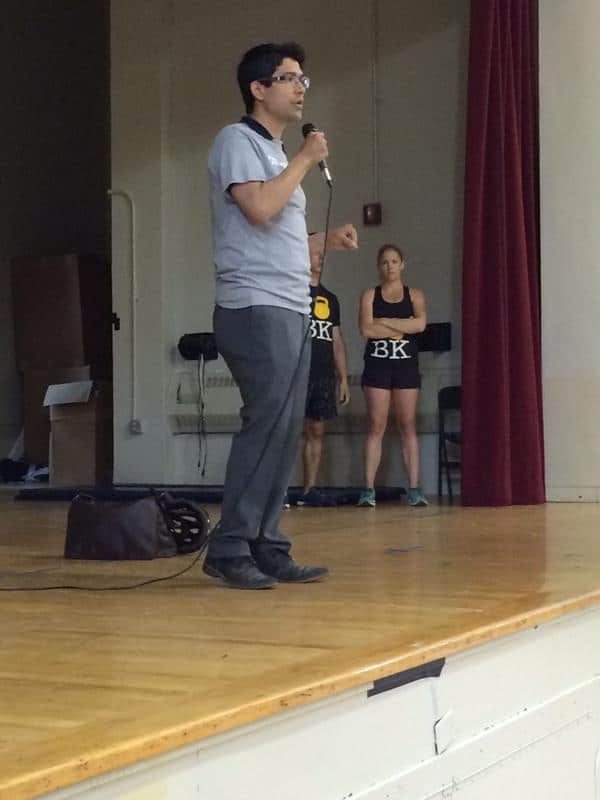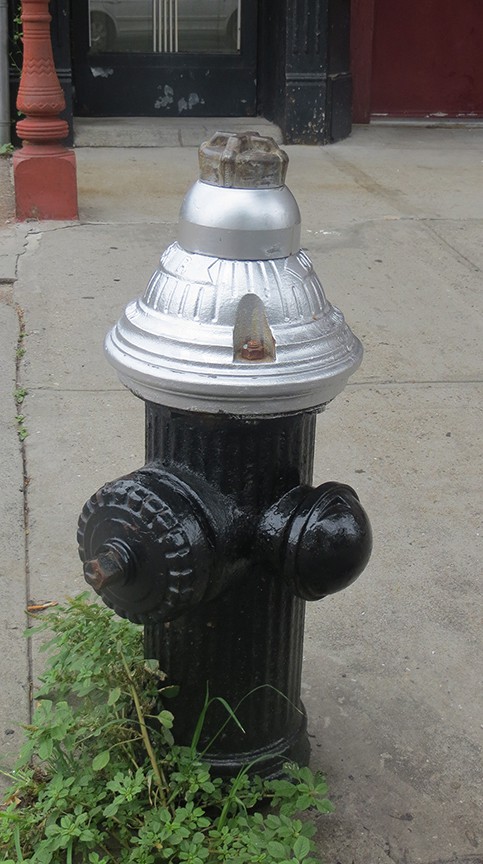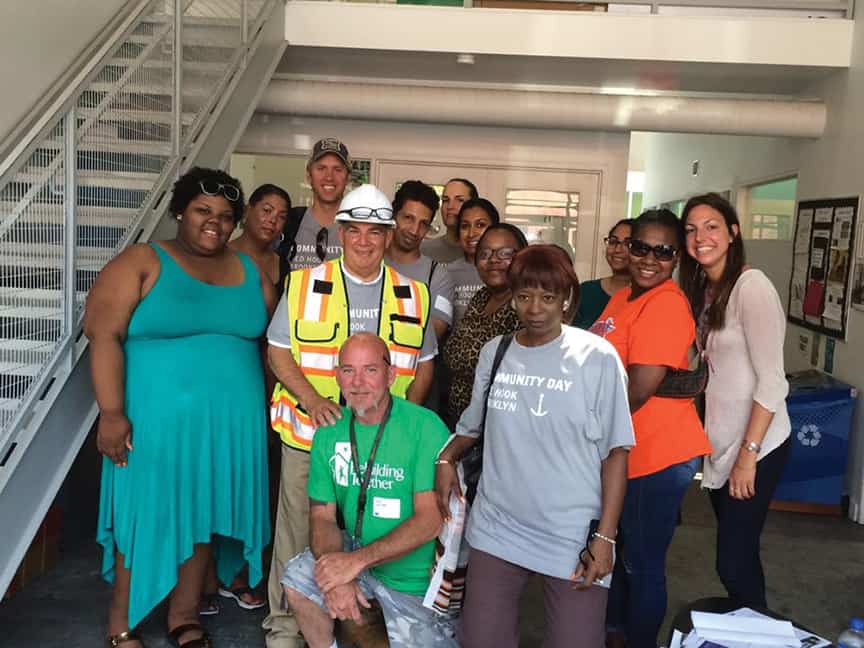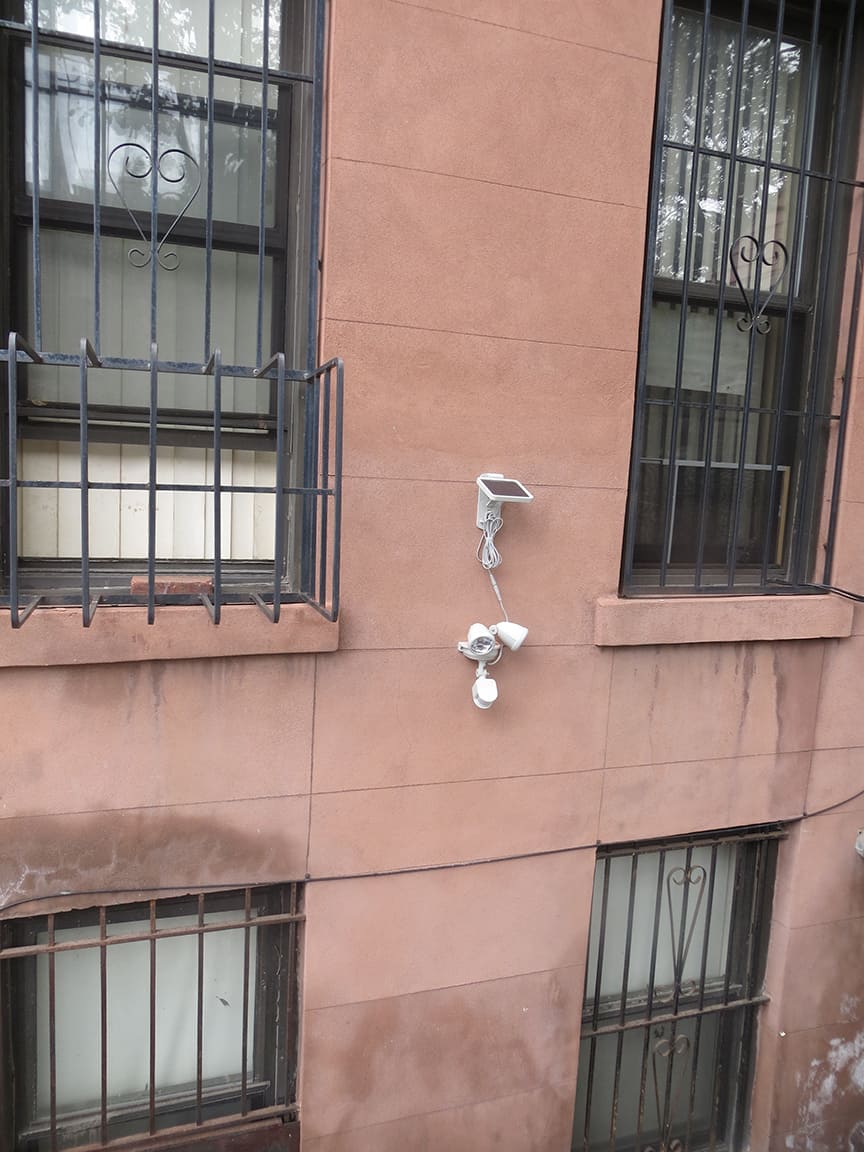Rebuilding Together, a large national non-profit organization founded in 1999, came to Red Hook after Hurricane Sandy and set up shop at 285 Van Brunt Street, taking over the office abandoned by Max Pollack Insurance. They have stayed, making it their NYC headquarters.

Their mission, as stated on their 990 tax form, is to “bring volunteers and communities together to improve the homes and lives of homeowners in need.” Their website proclaims that ” We exist to serve the pressing needs of low-income homeowners and nonprofit organizations throughout New York City. With the help of our corporate sponsors and civic-minded volunteers, we make this happen at no cost to the homeowner or organization that benefits from our programs.”
One of Rebuilding Together’s corporate partners is the Cleveland-based real estate developer Forest City Ratner Companies. Like a number of wealthy corporations, Forest City makes a practice of donating some employee time to selected community groups. They call this “Community Day,” and they have partnered with organizations such as Habitat for Humanity, the Salvation Army, Good Will and the Ronald McDonald House. As Forest City explains in a 2014 press release: “Since 2004, Community Day has been a chance for all of Forest City to come together as one company and demonstrate commitment to our core values,” said David J. LaRue, Forest City president and chief executive officer. “We believe in proactive community involvement that enhances the vitality of the communities where we live and work. It’s also a chance for us to give back as an organization and to show our commitment to good corporate citizenship.”
Our local Rebuilding Together office has developed a relationship with the Brooklyn Nets and it’s part owner Bruce Ratner, who is the former CEO and current Executive Director of Forest City Ratner Companies. For this year’s Community Day, Forest City chose Red Hook as its community of focus, and called on Rebuilding to guide them through the day.

Painting fire pumps
On Thursday, June 11th, Rebuilding brought Forest City, to Red Hook to celebrate what they called: “Revitalizing Red Hook Day.” Bruce Ratner himself, along with Ashley Cotton, VP of External Affairs together with 115 Forest City employees showed up wearing official grey Community Day Red Hook T-shirts. They came prepared to work.
The volunteers were taken through Red Hook and painted fire hydrants and installed solar activated security lights (part of an existing Rebuilding Together initiative). They went to the Red Hook Initiative and built shelves and painted their walls. They went to the Miccio Center as guests of Good Shepherd Services and did more painting and some outdoor planting. Then they went over to Visitation Church and did some more planting and landscaping on behalf of the new daycare program coming to the church.
Deeply committed
A selected group of local news reporters, including Channel 12 and the Brooklyn Eagle, were invited by Forest City to document their service to Red Hook. Councilman Carlos Menchaca was asked by Forest City to deliver some remarks on behalf of Forest City’s giving, which he did at the Miccio Center gym. Karen Broughton and Jill Eisenhard also spoke. The Brooklyn Eagle quoted Bruce Ratner: “Forest City Ratner Companies is not only in the business of creating new dynamic neighborhood destinations, we are deeply committed to supporting and amplifying the existing city fabric by making important investments in local communities.”

Forest City’s Brooklyn history
Forest City Ratner first came to Brooklyn in 1985, to develop the MetroTech. MetroTech was a city initiative to establish Brooklyn as an alternative for businesses who were thinking of moving from Manhattan to New Jersey. The city was worried about the loss of jobs. Forest City was given $329 million in tax and other incentives and went to work, completing the first phase of the office and educational complex in 1990.
Having a background in suburban malls, Forest City next decided to tackle an urban mall. The Atlantic Center mall, with Caldor’s as an anchor tenant, opened in the fall of 1996. However, many in the surrounding Fort Greene neighborhood felt it an affront and not welcoming.
A 2004 NY Times article described the shopping center:
” The Atlantic Center mall is not like other malls.
Instead of open, multilevel atriums where dozens of storefronts are easily captured by the naked consumerist eye, there are vast expanses of nothingness and dead corridors leading, it seems, to nowhere. In place of furnished common areas offering respite between purchasing bouts, there are broad stretches of shiny institutional floor tile and walls left bare save a hodgepodge of clown-colored signs advertising stores that no longer exist, or that cannot be reached without wending a route of circuitous switchbacks, or leaving the structure entirely.”
The article went on to quote the same Bruce Ratner who came to Red Hook last week: ” ”You would bring investors over the Brooklyn Bridge,” he said, ”and they would only see the color of people’s skin on Fulton Street, and they didn’t see the color of their American Express cards.”
Modifications were eventually made, and a second mall built next door. A much larger project was then planned to be adjacent to both malls, above the LIRR railroad yards. It was a contentious project which involved eminent domain and what some thought of as sweetheart deals.
A 10 year court battle with a neighborhood group called Develop Don’t Destroy ensued. Forest City slowly won each decision. They built a basketball arena and are in the process of building additional towers, although not the Frank Gehry designed office towers that were originally planned. A mix of luxury condos and affordable apartments are planned. They have taken on Russian and Chinese partners to help finance things.
Ed Weintrob, founder and then publisher of the Brooklyn Paper, which covered much of the Forest City history, wrote the following back in 2006:
“Over the last 12 months, no story has been as important to Brooklyn — and, as a result, to this newspaper — as Bruce Ratner’s Atlantic Yards mega-development.
With its 16-towers, 19,000-seat basketball arena, 6,000 units of housing and hundreds of thousands of square feet of office and retail space, Ratner’s mini-city is the biggest single-developer project in the history of Brooklyn.
As such, it deserved — and got — our attention, sometimes obsessively so. As we prepared our year-in-review issue, we noticed that not a single issue this year was devoid of coverage of some element of the Ratner proposal.
Yet our laser-like focus has earned us little praise and sometimes even outright scorn from local elected officials. In an interview in this week’s Papers, the project’s biggest booster, Borough President Markowitz, calls us “biased” because our coverage revealed the shocking density of the project, the traffic it would cause, and the subsidy-enriched sweetheart deal Gov. Pataki’s cronies cooked up in Albany to make this project work for Ratner.
Given how we’ve been attacked for such coverage — and the overwhelming support the project enjoys among city and state powerbrokers — many of our readers have wondered why we even bothered. Indeed, it would have been far easier for us to blow off Atlantic Yards, as did the daily papers, and our weekly competitor, the New York Post-owned, Sheepshead Bay-based, Courier-Life chain.
For most of the year, the supposedly ravenous local press corps took a pass on Atlantic Yards, swallowing whole such Ratner myths as the notion that the project would be a boon to the lower and lower-middle classes (actual state analysis shows it would hasten, not forestall, gentrification in Prospect Heights), and that Brooklyn needs lots of shiny new skyscrapers to feel good about itself (as Markowitz says in the interview).
For some reason, everyone seemed to accept Ratner’s economic projections, even as they dropped and dropped again during the public approval process. And everyone was happy to accept the already-inaccurate traffic analysis provided by Ratner’s state partners.
So why did we persist in our aggressive reporting? Markowitz contends in the interview that we did it because we simply hate Bruce Ratner. We actually do not hate Bruce Ratner. This isn’t personal.
Our obsession with the project’s taxpayer-supported financing, its outright lies about job creation, and it’s preposterous density is a reflection of exactly what journalists are supposed to do: question authority and ensure that elected officials are doing their jobs.
Yet the elected officials ignored our objective and non-biased reports, which week in and week out demonstrated the flaws of Atlantic Yards.
They did so at their own peril, setting the stage for a costly, permanent change in the heart of Brooklyn.”
The Red Hook Star-Revue has no knowledge of any plans that Forest City may or may not have to bring their development style to Red Hook. For now, it’s just painting, planting and a little publicity.









